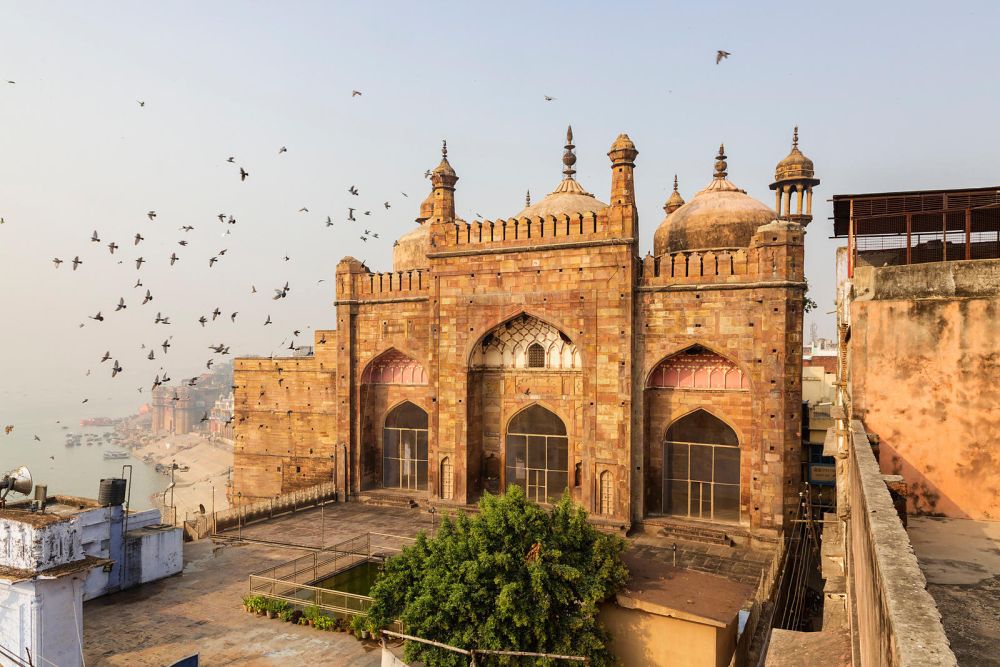

Varanasi, also known as Benaras or Kashi, is one of the oldest living cities in the world and a major cultural and religious hub in India. It is located in the state of Uttar Pradesh and is renowned for its rich tapestry of music, arts, crafts, education, and above all, its prominence in Hindu religion and spirituality. The tourism history of Varanasi is as ancient as the city itself, with pilgrims visiting the Ganges for spiritual salvation for thousands of years. The city’s landscape hosts a multitude of temples, pilgrim spots, and historical sites, including the famous Alamgir Mosque, also known as Beni Madhav Ka Darera.
The Alamgir Mosque holds a special place in the history of Varanasi. It is situated on the banks of the river Ganges and provides a stunning view of the Panchganga Ghat. Built by the Mughal Emperor Aurangzeb on the site of a Vishnu Temple, the mosque is a blend of Hindu and Mughal architecture which is evident in its design and structure. It represents the complex history of India and its religious past, where multiple dynasties and faiths have left their mark, sometimes in harmony and sometimes in conflict.
The mosque is open to visitors, although entry to the prayer area is restricted for non-Muslims. Tourists often visit to admire the imposing structure and the intricate artwork that has withstood the test of time. The vicinity of the mosque to other cultural and spiritual sites in Varanasi makes it a significant stop in the exploration of the city. Travelers can access the mosque by boat, offering a unique experience of the religious city from the waters of the Ganges.
In recent years, the government and local authorities in Varanasi have put significant efforts into the development and promotion of tourism. There is a trend towards providing a holistic experience that combines spirituality, culture, and leisure for tourists. Alternative accommodations like boutique guest houses and wellness centers have become increasingly popular, providing tourists with options that differ from traditional hotel stays. Cultural immersion experiences, including walking tours of the Ghats, classical music performances, yoga sessions, and food trails, have also become sought after.
Additionally, there have been initiatives to enhance the sustainability and ecological health of the city, aiming to protect the Ganges and maintain the sanctity and cleanliness of the various spiritual sites. Such measures are designed not only to conserve the environment but also to improve the overall tourist experience. The local craftsmanship and handloom industries are being promoted through tourism, giving visitors a closer look at the artistry of Varanasi, thereby contributing to the livelihoods of the local artisans.
The Alamgir Mosque is an integral part of Varanasi's spiritual and cultural identity, embodying the layered history of this ancient city. As Varanasi continues to adapt to the latest trends in tourism while preserving its heritage and traditions, it offers an increasingly enriching experience to visitors from around the world. With ongoing efforts to sustainably develop the city's tourist infrastructure, the future looks bright for tourists looking for a meaningful and multi-faceted travel experience in Varanasi.